Getting the God’s-eye view of your ministry
Dedicated planning time helps me step out of the day-to-day to work on my ministry so I have a clearer vision of what to work on in it. It’s what helps me sing—more often and more wholeheartedly—“alleluia” for the gift of serving in Christ’s name. And it helps me sing fewer notes of lament. This kind of practice is transformative, so here are my best suggestions for how preachers can harness the power of planning time outside the ministry.

The Preacher's Easter Retreat: Hope & Holiness
Whether you have ninety minutes, three hours, or six, this free, at-home Easter retreat is intended to help you reflect on God’s holiness as the source of our hope—because nothing else is as worthy of it.

How to Tell the Story—a Simple Structure for Holy Week, Easter, and Every Sermon
A year ago I wanted to help you prepare for Easter with a series about this simple, save-you-time, quick-to-craft, sermon structure to discern and organize your message. But COVID-19 disrupted everything. I then turned my attention toward preaching into the crisis—and was never able to return to this helpful content. So now, I’m resurrecting the post to show you how to employ this simple story-structure process for Easter (or any sermon).

Palm Sunday Quotations for Preaching and Reflection
Have this collection of inspiration sent directly to your inbox via the link within.

3 Easter Sermon Examples—Based on a 4-Part Framework—to Inspire Your Preaching
As you craft your Holy Week and Easter sermons, consider this 4-part, general scaffold to discern a message for any sermon—with examples of three Easter-tide sermons to illustrate the concept and inspire your own Easter preaching.

Preaching One Year Into the Pandemic
As the U.S. comes to the end of its first year managing the pandemic, I hear frustration among preachers with each other. The source of tension? A disagreement about the best ratio between preaching lament and joy. To all preachers everywhere, I say: Yes. There is the need for lament, and there is the need for joy. And if we’re not sure about the best ratio, and if we’re feeling a little suspicious of our colleagues who tip a bit more toward one side than the other, then our parishioners are probably feeling the same way about each other—and us.

This Lent, there's only what’s in front of us
In our shrunken worlds with fewer distractions, we can be re-membered by God, reminded that it doesn’t matter what the project is, because all there is is what’s in front of us. Whether we serve in that moment to stitch together a prayer or an alternate-reality Ash Wednesday service or a humble email to confirm an appointment, there is only one thing: to serve.

Seeing the Bigger Picture: A Guest Post by The Rev'd Dr. Kenyatta Gilbert
“How you see yourself and read your Bible will dictate your politics. As you consider how to frame sermons from a justice-oriented Christian perspective… I want to [offer] with three message-crafting strategies for helping you and your listeners to see the big picture exegetically and hermeneutically.”

Preaching Ash Wednesday: 8 suggestions for preaching repentance and (avoidable) death
On this Ash Wednesday, not only is there our usual grief and fear about death, there is also anger and resentment. Not to mention shame and guilt from those who may realize too late they’ve contributed to the demise of others. We must acknowledge our unusual circumstances this year and invite people to grieve, confess, and make amends.

For the Love of Preaching: Sermon Prep Pandemic-Style (3rd in a 4-Week Series)
While we’re building the kingdom of God, however, most of us in the West “drink the kool-aid” of the productivity-equals-success/respect/love poison our society ladles out for us during our construction breaks. Even though the drink tastes bitter, and we say the Church is in the world and not of it, and we say we hate the stuff, we preachers keep going back and holding out our cups for refills.
While we drink, we look with dismay at that partially constructed kingdom and see all the work left to be done. So we double our efforts, squeezing more tasks into the cracks of time, adding a patch here, pouring cement there, but seemingly to no avail. Because the work is never done and the task lists only seem to grow larger. And that’s in a non-pandemic year.
